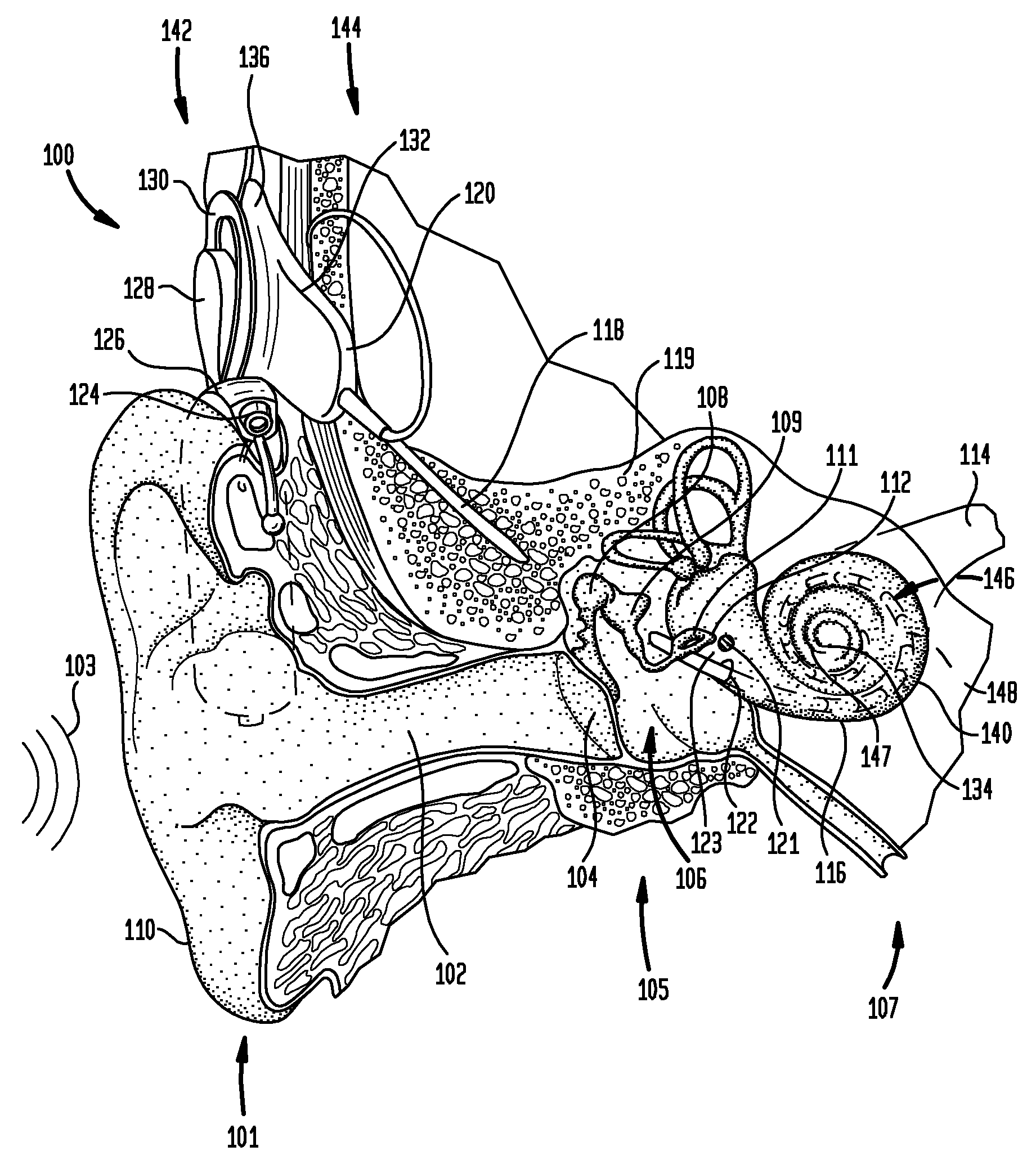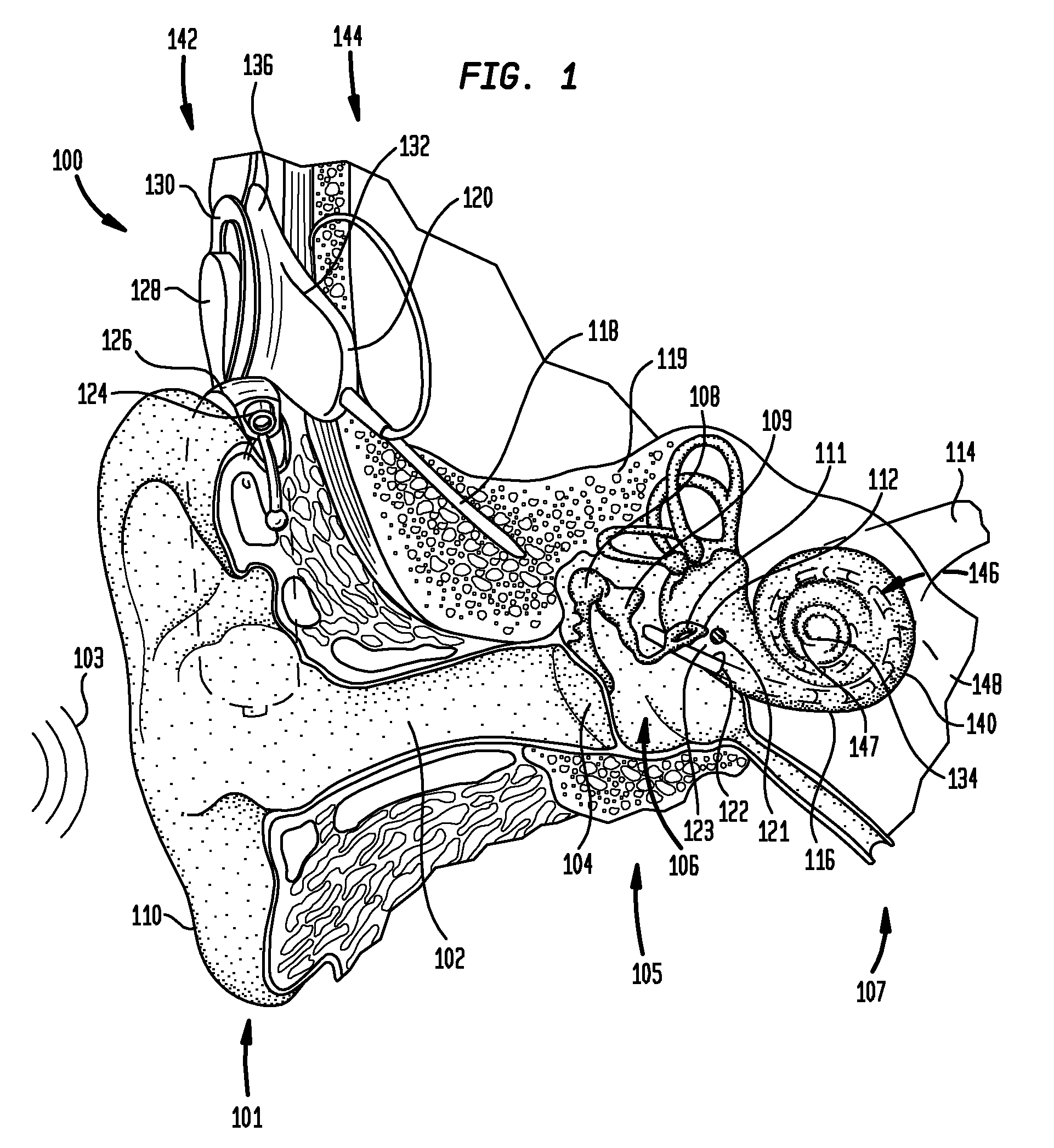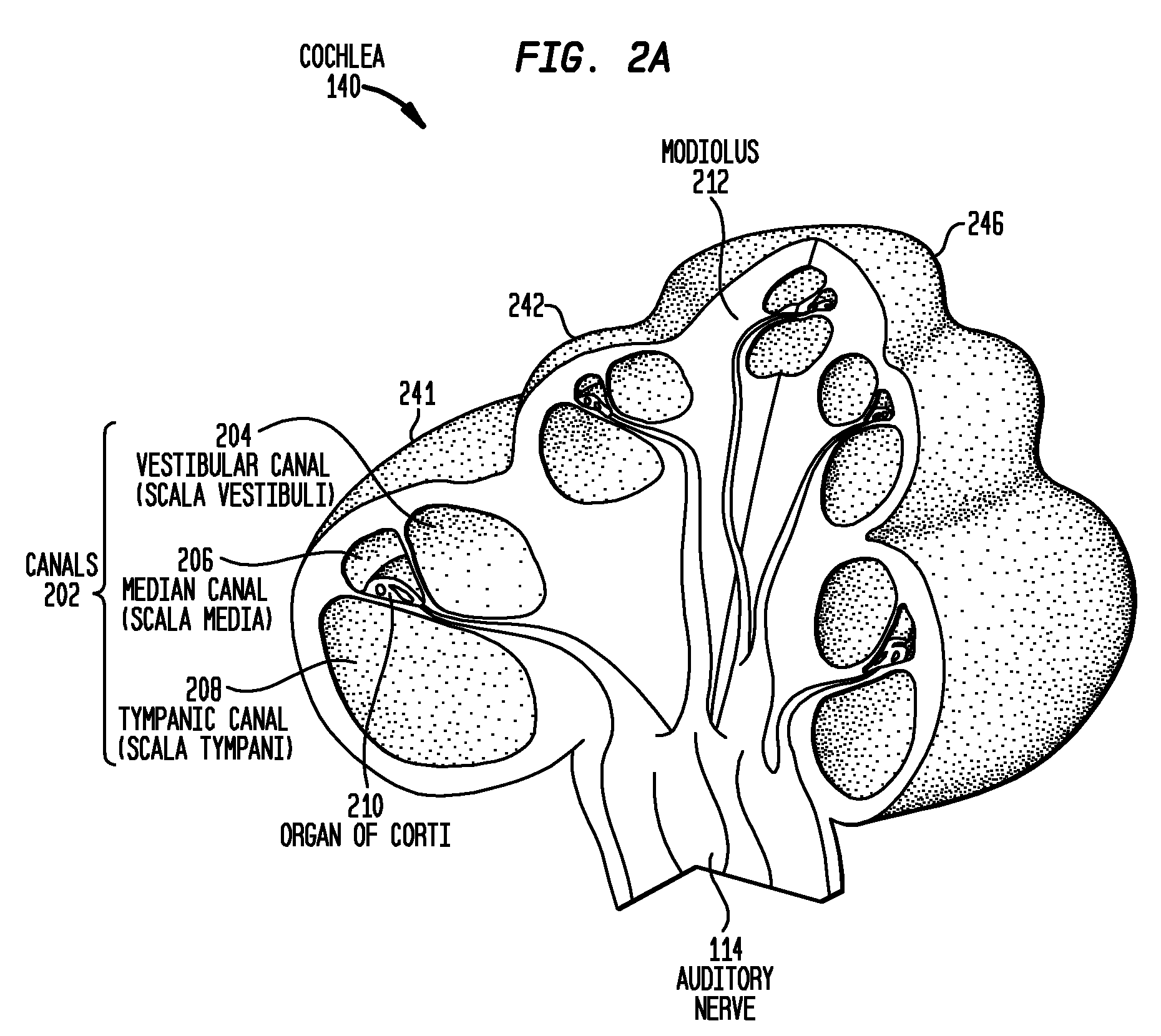Optical neural stimulating device having a short stimulating assembly
a neural stimulation and optical technology, applied in light therapy, radiation therapy, artificial respiration, etc., can solve the problems of conductive hearing loss, impeded normal mechanical pathways for sound to reach the hair cells in the cochlea, and conductive hearing loss
- Summary
- Abstract
- Description
- Claims
- Application Information
AI Technical Summary
Benefits of technology
Problems solved by technology
Method used
Image
Examples
Embodiment Construction
[0054]Aspects of the present invention are directed to a cochlear implant having a stimulating assembly configured to be fully implanted only into a basal region of a recipient's cochlea. A cochlear implant having such a short stimulating assembly is advantageously used to treat the portion of the hearing impaired population who have the ability to perceive low frequency sounds, but who suffer from high frequency sensorineual hearing loss. Such a cochlear implant may also be advantageously used in individuals who have progressive hearing in the mid to low frequency ranges.
[0055]A cochlear implant in accordance with embodiments of the present invention comprises an electromagnetic radiation (EMR) generator to generate optical stimulation signals. The short stimulating assembly comprises optical contacts configured to apply the optical stimulation signals to the cochlea of the recipient. In specific embodiments, the cochlear implant further comprises an electrical stimulation generato...
PUM
 Login to View More
Login to View More Abstract
Description
Claims
Application Information
 Login to View More
Login to View More - R&D
- Intellectual Property
- Life Sciences
- Materials
- Tech Scout
- Unparalleled Data Quality
- Higher Quality Content
- 60% Fewer Hallucinations
Browse by: Latest US Patents, China's latest patents, Technical Efficacy Thesaurus, Application Domain, Technology Topic, Popular Technical Reports.
© 2025 PatSnap. All rights reserved.Legal|Privacy policy|Modern Slavery Act Transparency Statement|Sitemap|About US| Contact US: help@patsnap.com



